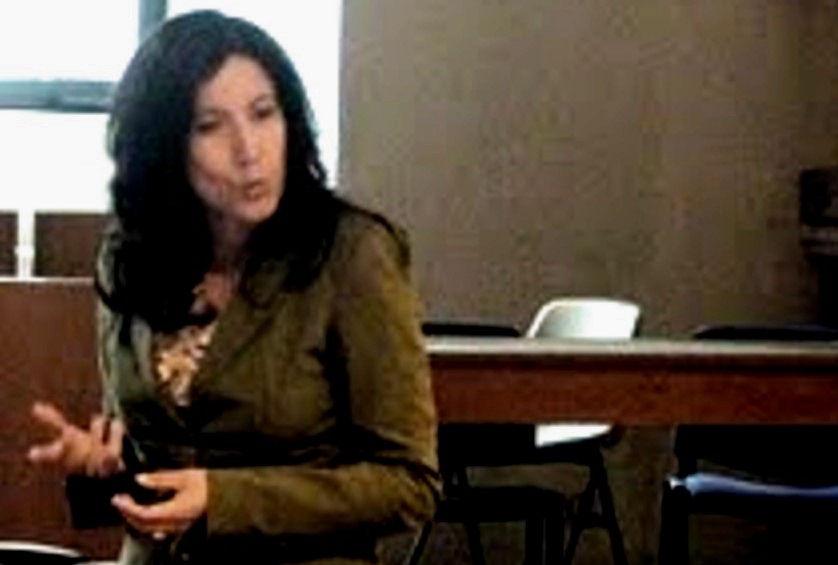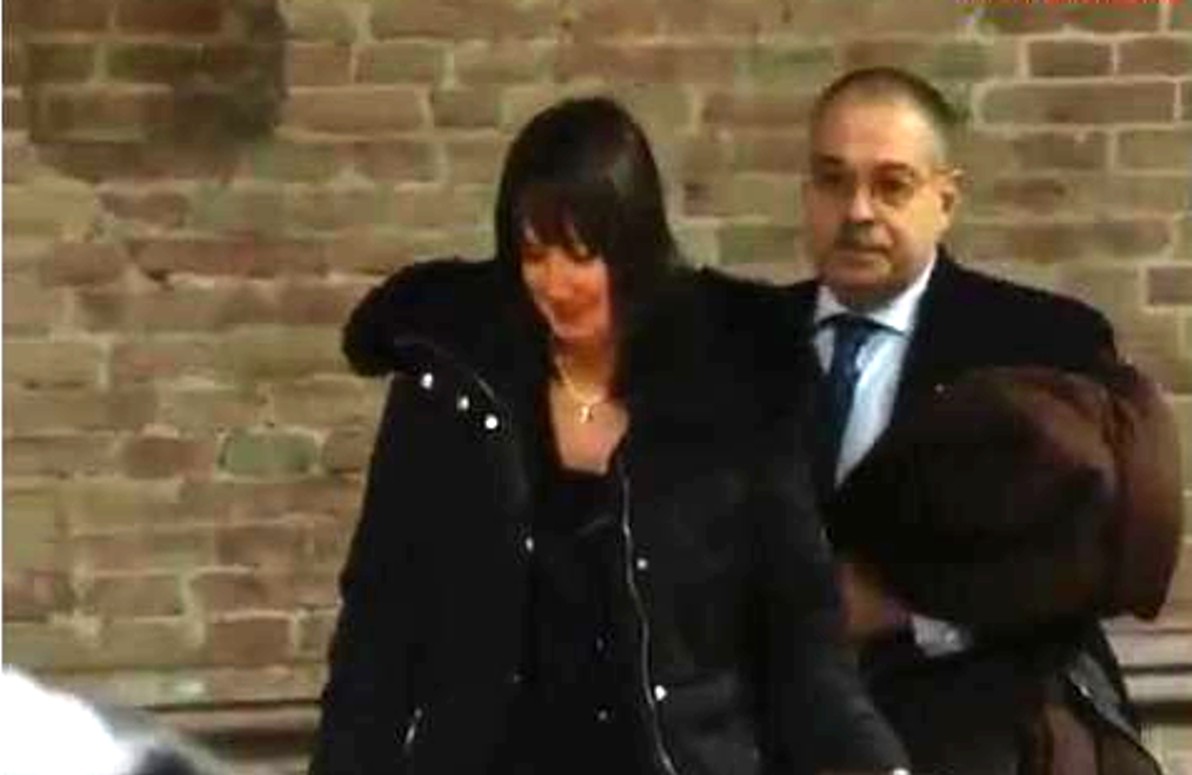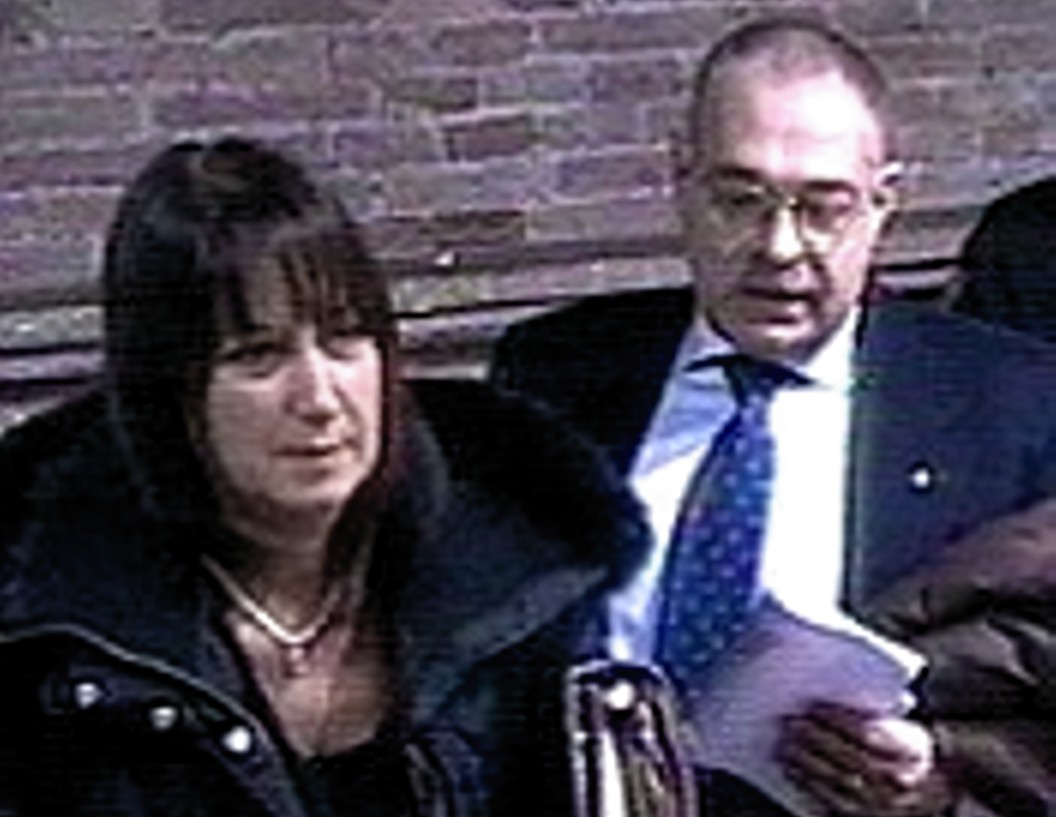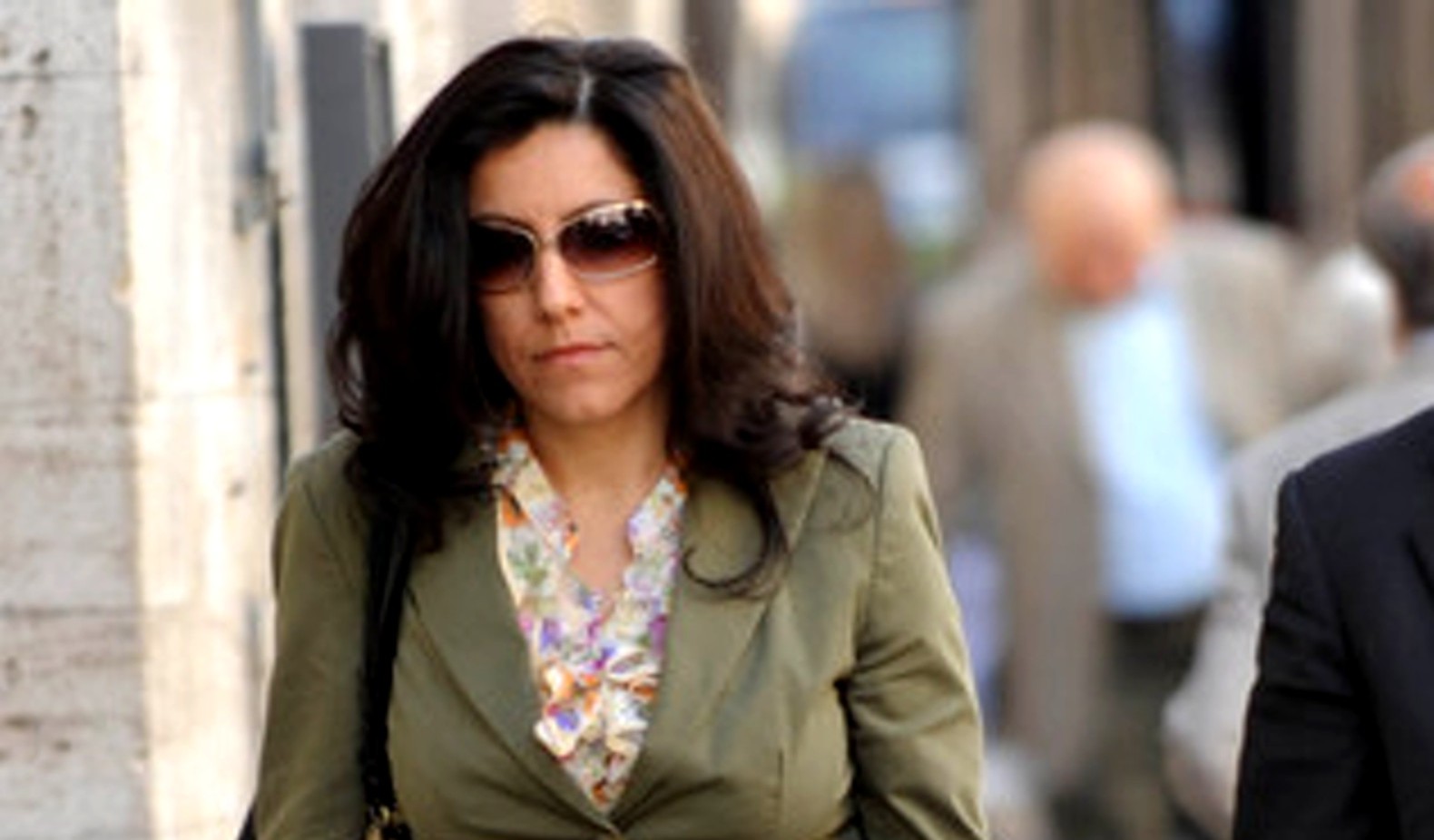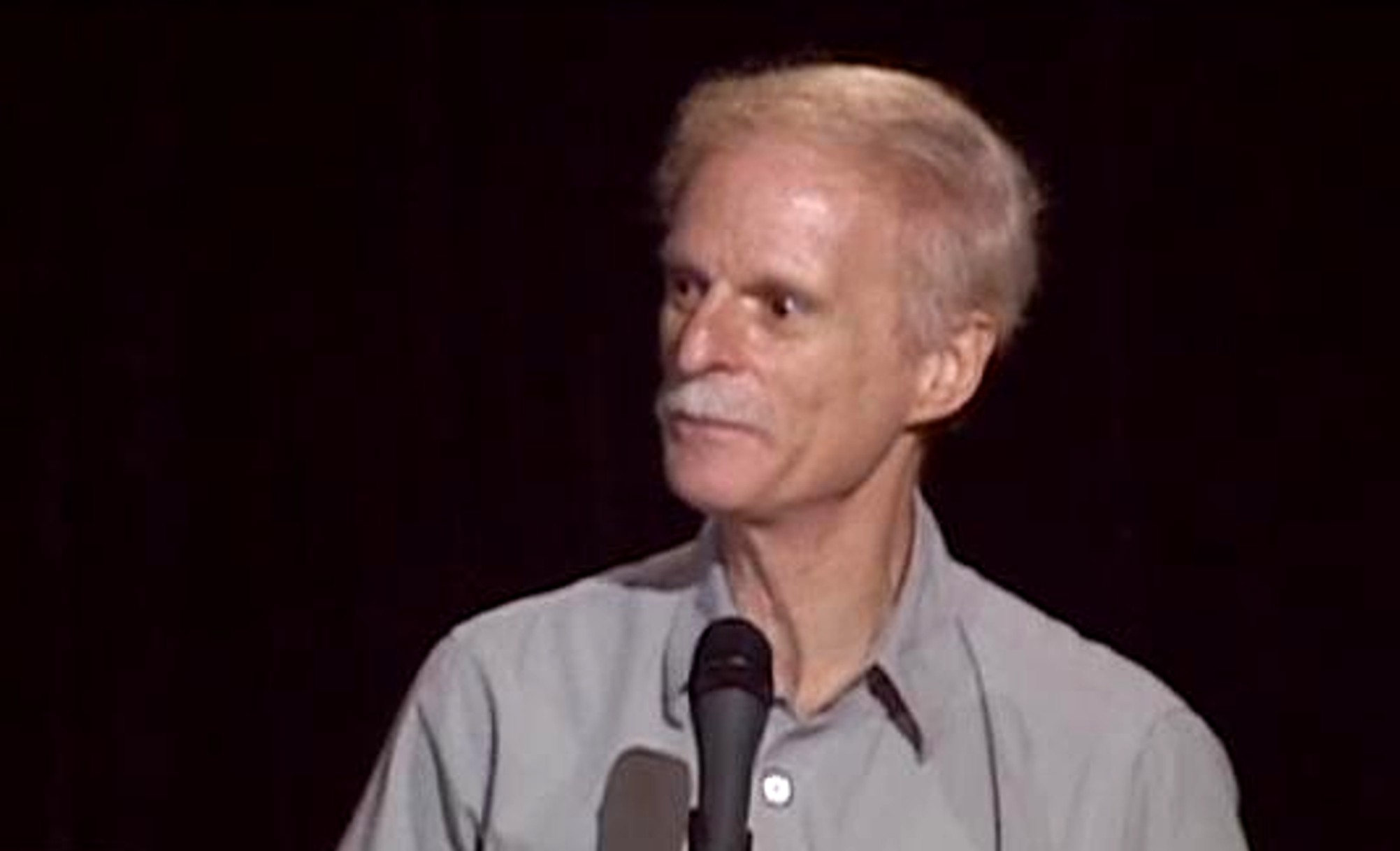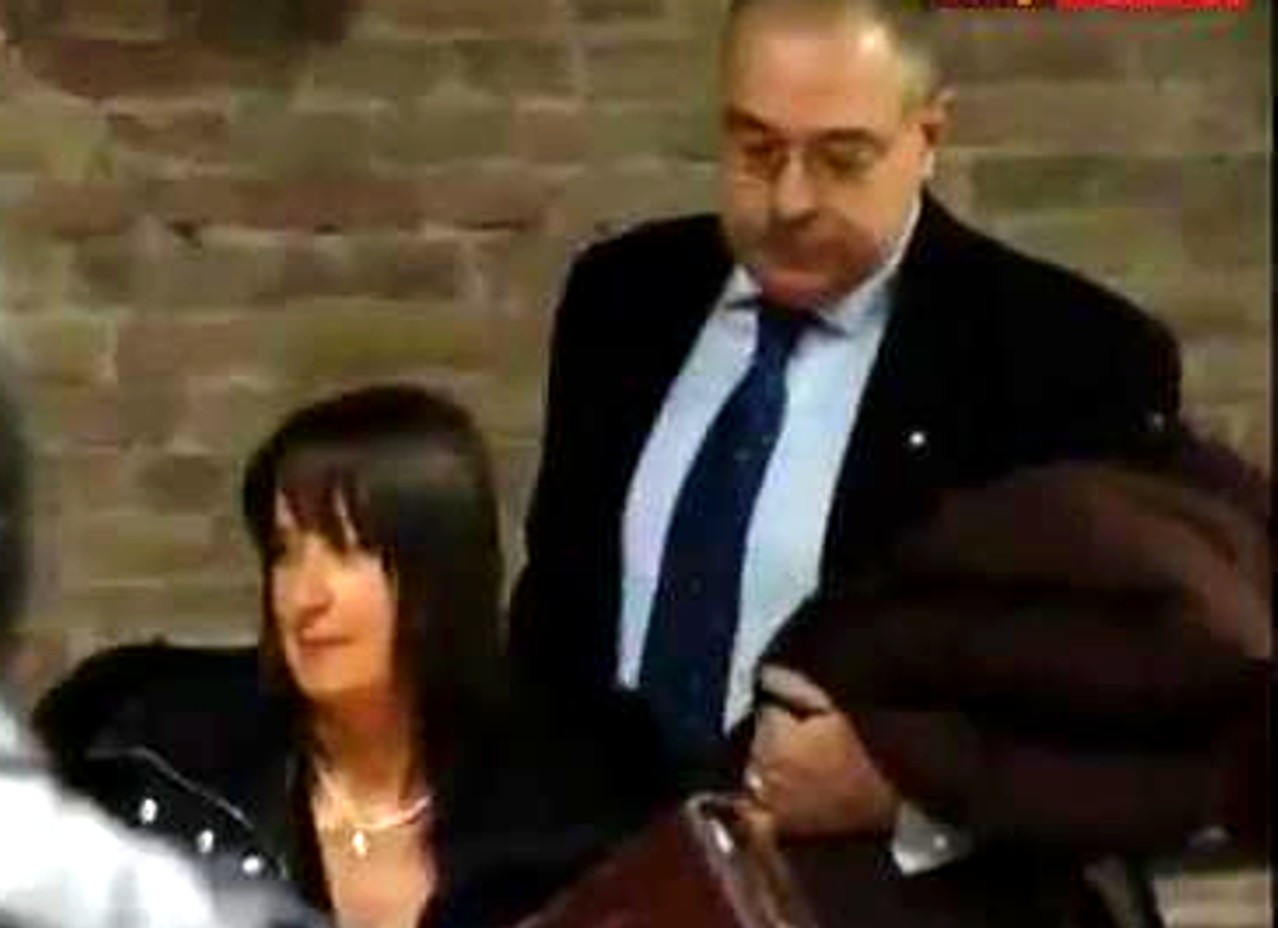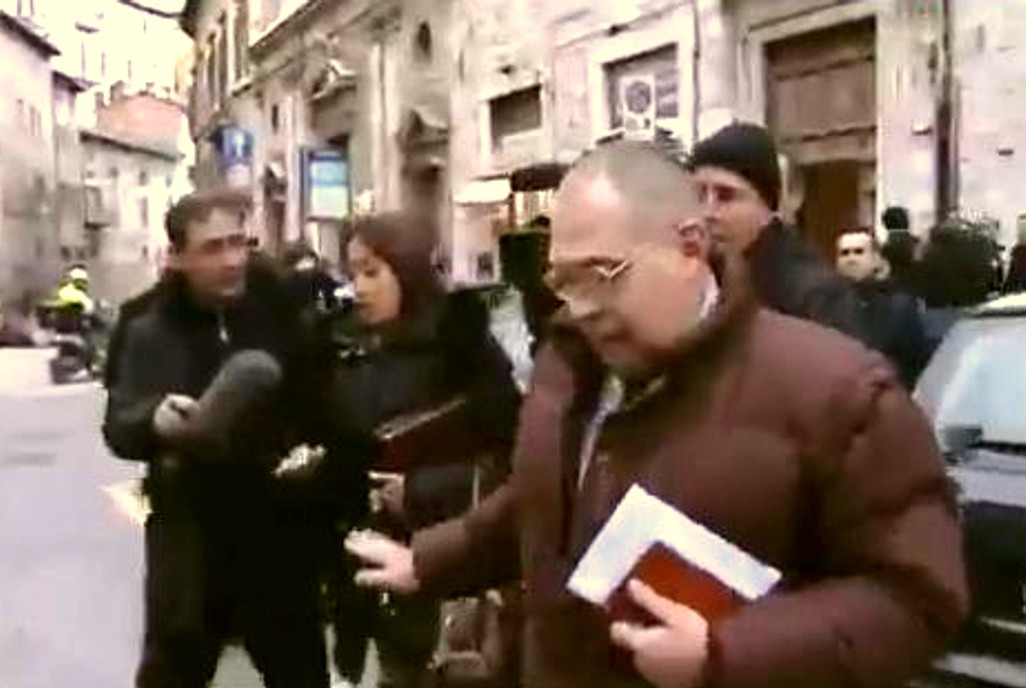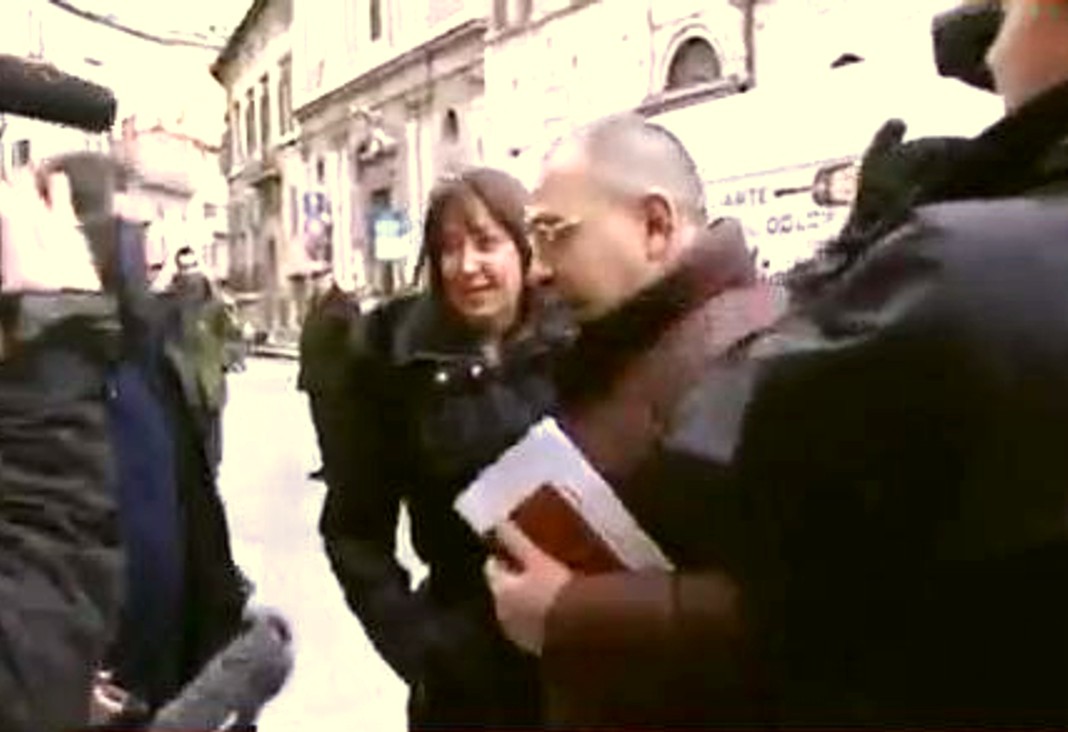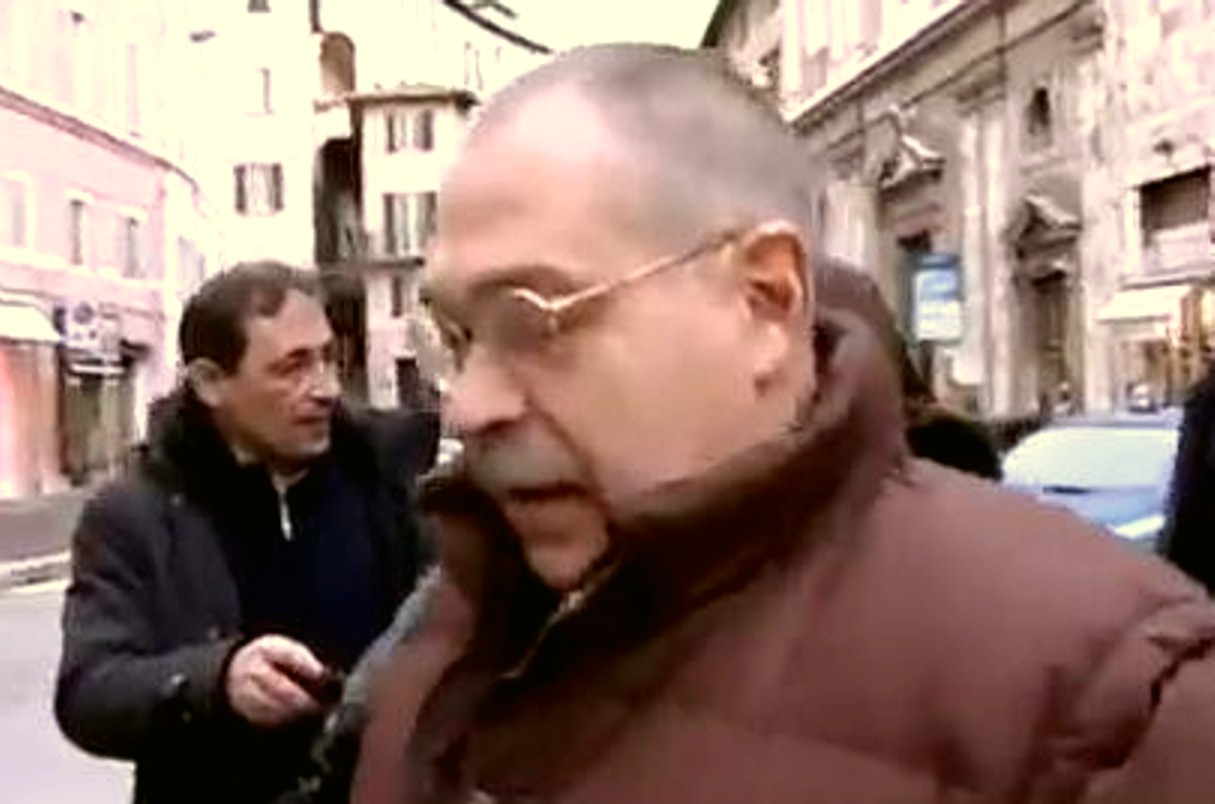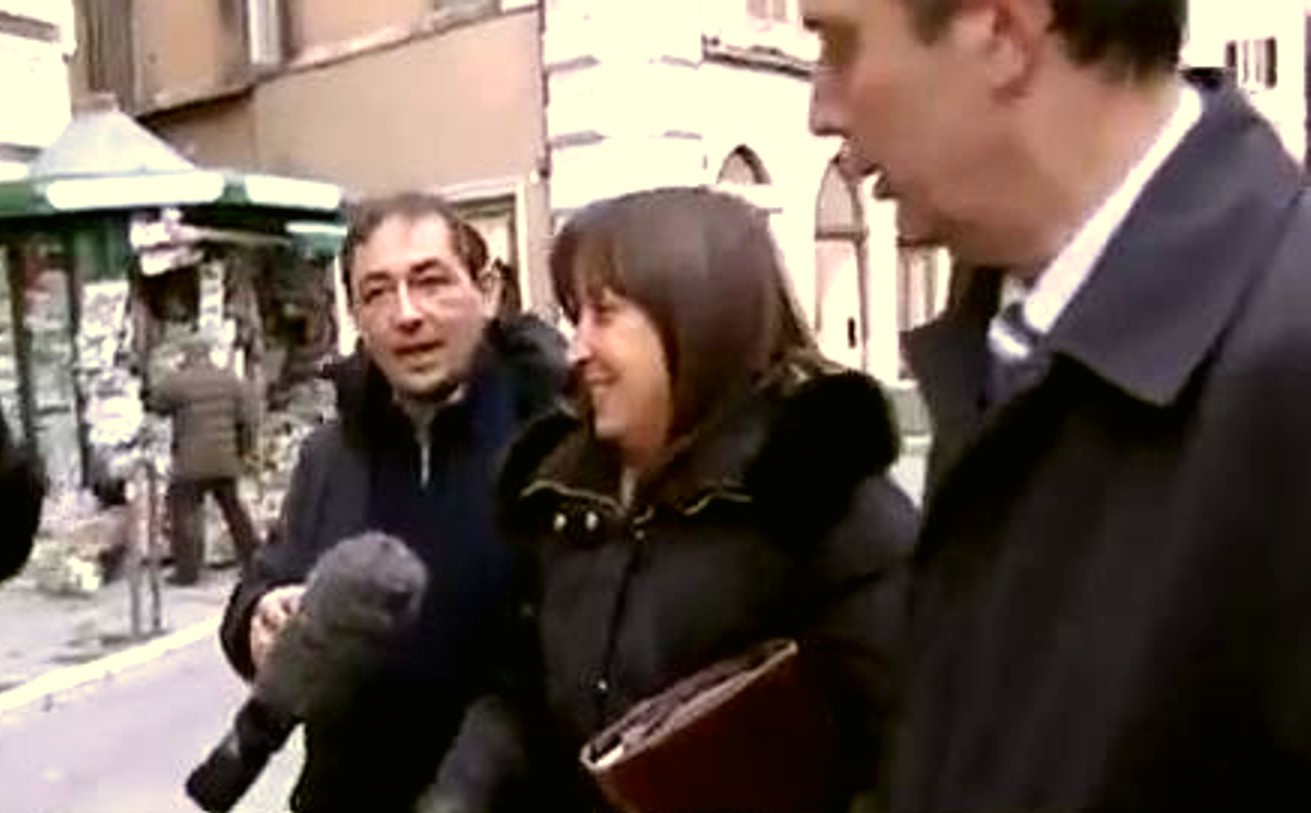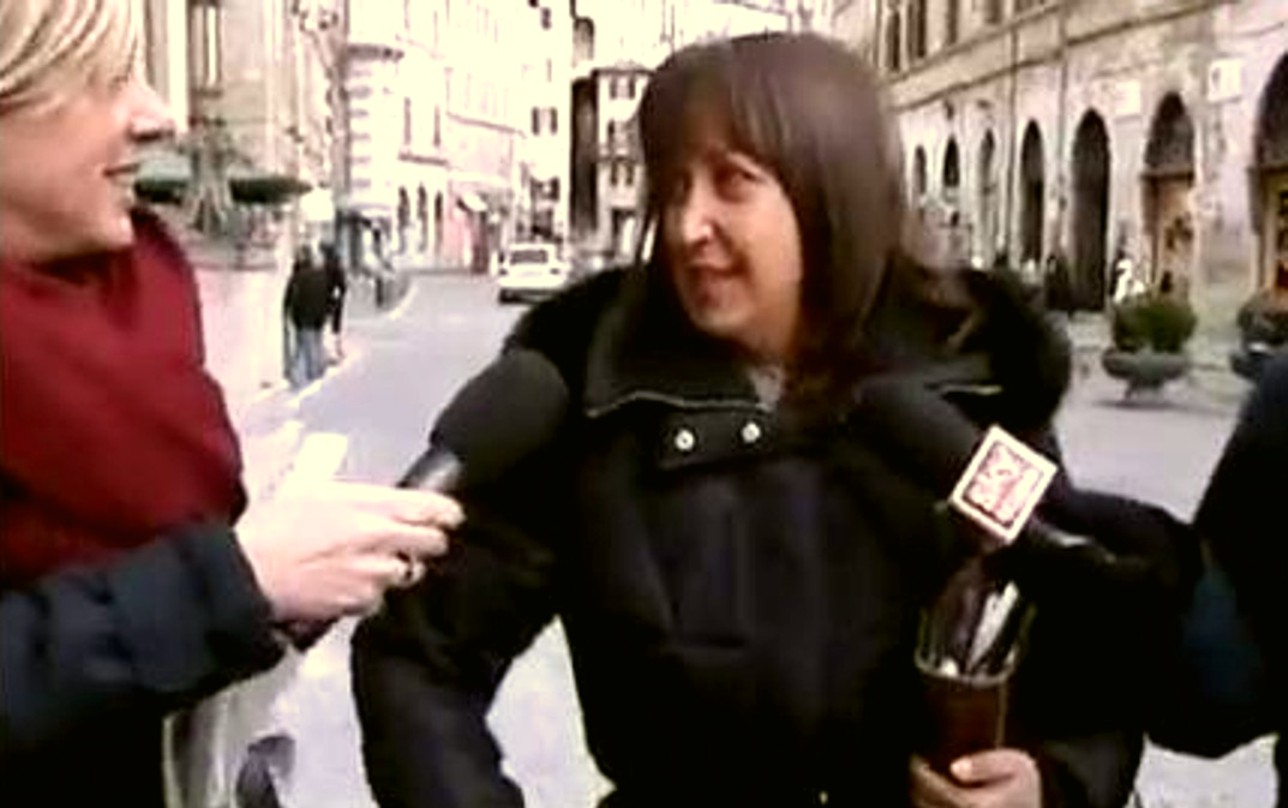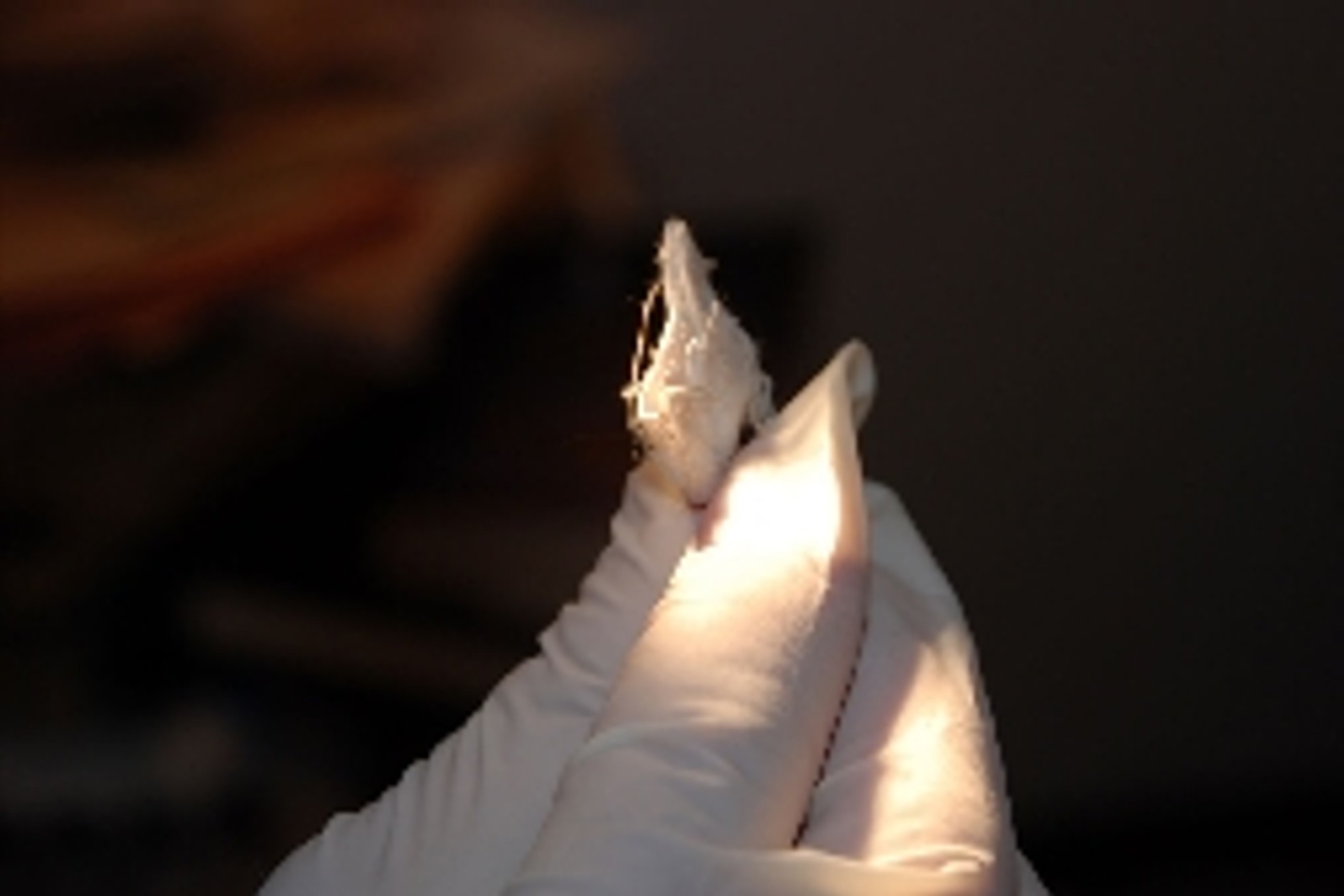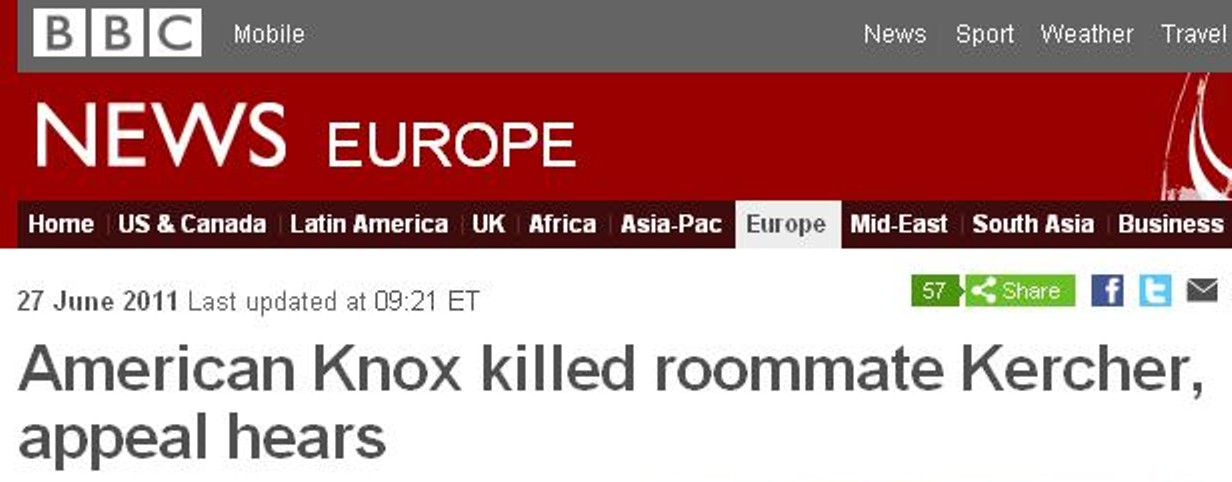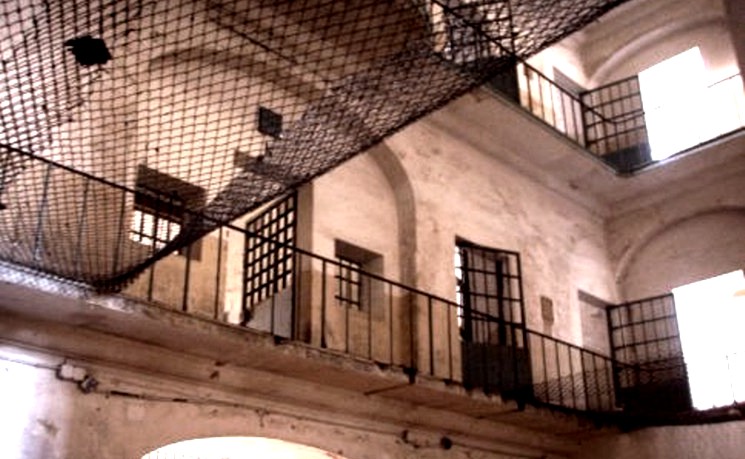
Category: Evidence & Witnesses
Monday, July 25, 2011
Tenth Appeal Court Session: Italian Reporting So Far Good, First English-Language Reports Misleading
Posted by Peter Quennell
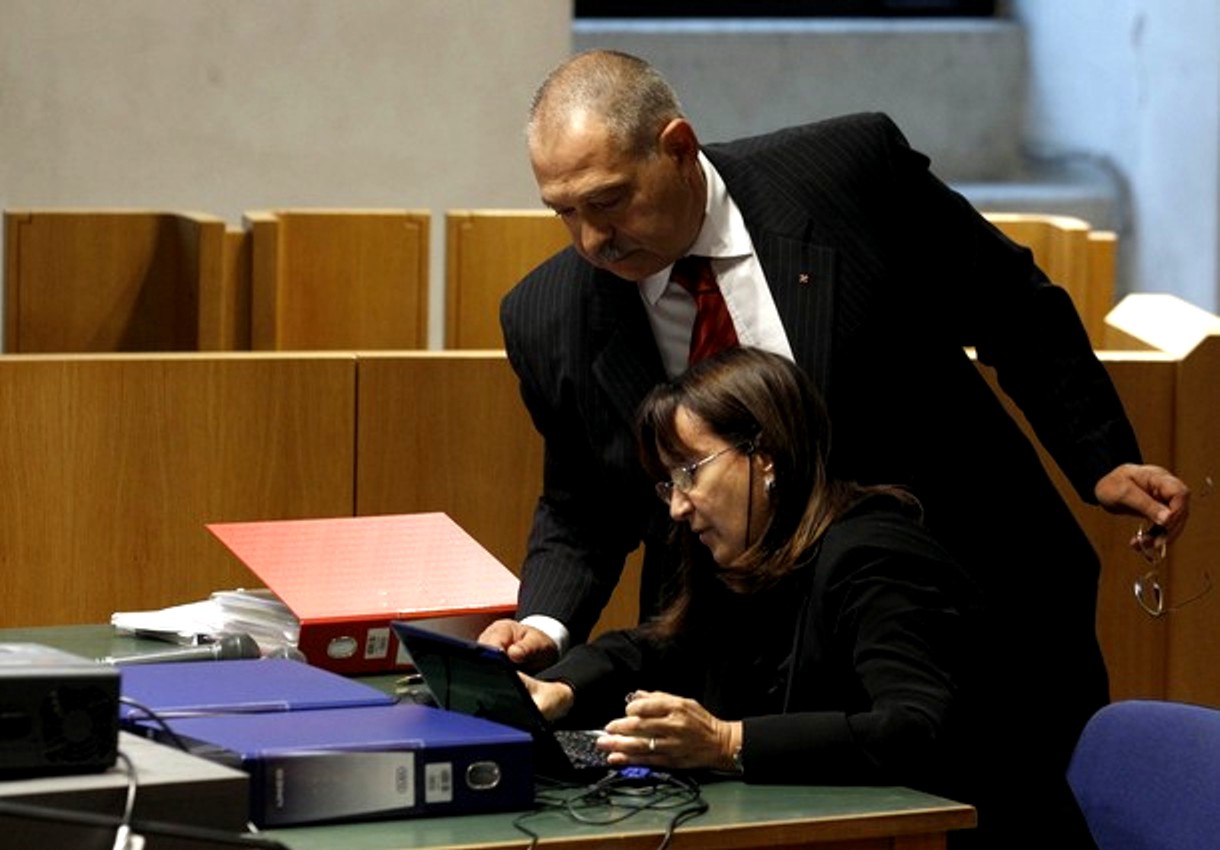
Italian media are reporting flatly and evenly that the court session has begun. Some have asked to use quotes from our posts on the suspect report.
First English language reports are less impressive. Peter Popham of the UK Independent which has been a major propagator of false facts in the past has already posted this:
There has never been any forensic evidence placing Amanda Knox at the scene of Ms Kercher’s murder.
Actually there has been. Plenty. Various mixed-blood traces in the bathroom, corridor and Filomena’s bedroom, and several footprints in blood. All these the defenses generally keep well away from, as there simply seems no innocent way to explain them..
More misreporting can be presumed and we will add any additional examples here or in comments below.
Francesco Maresca, the lawyer for the victim and her family, made a strong statement before the start of the court session. Here it is from TGCom in part:
The family of Meredith Kercher, the British student murdered in Perugia, is feeling “a lot of concern” about the latest developments in the appeal process. This was conveyed by their lawyer Francesco Maresca.
The new findings are considered “slight, but perhaps still too much, given the wild atmosphere in which they have been advanced, in contrast to the evidence that was seriously and carefully developed and presented by prosecution forensic scientists.”
“As to the objections of the new experts, they are familiar. We know them by heart and they have already been presented… The Kercher family is surprised at the categorical nature of Conti and Vecchiotti’s assessment.”
He added that “there is much other proof that shows the guilt of the two accused parties.”
Sunday, July 24, 2011
Is the Conti-Vecchiotti DNA Review Defamatory? Stefanoni Believes So and May Sue
Posted by Peter Quennell
This looks like really bad news for Amanda Knox and Raffaelle Sollecito. The last straw.
TJMK main poster Fly By Night already described in great detail how suspect and heavily biased is the Conti-Vecchiotti report.
He predicted fireworks by the Scientific Police and prosecution expert witnesses who were seriously and without proper bases impugned. He predicted the fireworks would start tomorrow in court.
But already the fireworks have begun. The Guardian’s Tom Kington (who himself has often seemed to show a pro-Knox bias) reports quoting the UK’s Sunday paper The Observer:
A prominent forensic scientist, whose DNA evidence helped to convict the US student and her former boyfriend, has vowed to overturn the findings of an independent report that says much of her work in the case was unreliable.
Written by two independent experts from Rome’s Sapienza University, the 145-page DNA review rubbishes the work of Patrizia Stefanoni, the police forensic scientist who found Knox’s and Kercher’s DNA on a kitchen knife at Sollecito’s house and identified DNA belonging to Sollecito on a torn bra clasp found beside Kercher’s semi-naked body.
The report claims Stefanoni ignored international DNA protocols, made basic errors and gave evidence in court that was not backed up by her laboratory work, rendering the knife and bra strap worthless as evidence. But Stefanoni has vowed to fight back during three hearings devoted to the DNA reviews.
“I am angry about the false statements in this report and ready to come to court to highlight the past record of these experts,” she told the Observer. “I am also looking into taking legal action against them. What international DNA protocols are they talking about? The Italian police is a member of the European Network of Forensic Science Institutes (ENFSI), while they are not.”...
After discovering there was no DNA left to check on the knife or the bra clasp, the experts retraced the steps taken by Stefanoni, concluding that the DNA trace of Kercher on the blade was so weak it could not be reliably matched ““ or was at best the result of contamination ““ and quoted Stefanoni admitting in court she should have double-tested her result to be more convincing.
Stefanoni claimed she had no need to repeat tests since the experts for the defence were on hand to witness her work. “And it was good enough to show it was Kercher’s DNA,” she said. “A small amount, but good quality.”...
The experts quote numerous US police and FBI experts on the risk of low DNA results and poor evidence handling, prompting one Italian police source to claim they were being fed information by Knox’s defence team. (Emphasis added.)
More attempted manipulation behind the scenes that now turns out to be heavy-handed overreach? Good luck to Judge Hellman tomorrow. He appointed the two “independent experts.” And he already almost lost control of his court once.
He will already be getting anxious to protect his good name before the Supreme Court. Unlikely now to buck any trends.
Sunday, July 17, 2011
Repeat Of The Powerpoint Guides To The Relevant Locations And Events On Meredith’s Fatal Night
Posted by Kermit
Click on the two images below for the two Powerpoints which will take a few seconds to load.
First posted late in 2008. We re-post them now in response to questions we’ve received from the many new arrivals to Meredith’s cause.
Wednesday, July 13, 2011
Analysis Suggests The Conti-Vecchiotti DNA Review Is Weak, Tendentious, Cites Non-Existent Standards
Posted by Fly By Night
Background
In light of the huge fanfare two weeks ago over the release of the court-ordered independent expert review by Carla Vecchioti and Stefano Conti (image above, more in post below) on the forensic science methods and findings of Dr. Patrizia Stefanoni as part of the Knox/Sollecito appeal, we start this analysis of that report by summarizing a few hard facts:
- The DNA samples currently under review by the court are NOT the only DNA samples used to convict Amanda Knox and Raffaele Sollecito. In fact, the five mixed samples (not just DNA ““ there was the fresh blood of both women in four of them) of Amanda Knox and Meredith Kercher constitute the strongest, most damning physical evidence of the case. This is why they have not been subjected to independent review during the appeal, along with the great majority of the evidence Judge Massei and the jury considered in convicting Knox and Sollecito of the murder of Meredith Kercher.
- In reviewing the findings of Dr. Stefanoni, Technical Director/Principal Biologist with the Polizia Scientifica in Rome (image below), the expert report is also critiquing the findings and opinions of an entire well-regarded forensics agency along with the personal views of many prominent forensics experts. They include Dr. Renato Biondo, Professor Francesca Torricelli, and the nationally prominent General Luciano Garofano who in support of Dr. Stefanoni’s own open descriptions have provided lengthy statements describing in great detail their reasons for agreeing with Stefanoni’s methods and findings.
- The use and acceptance of LCN DNA analysis techniques in the USA lags behind that of other countries in the world, as documented in the numerous publications on the topic now seen in US professional journals. Enhanced typing methods for LCN DNA are routinely relied upon in forensic DNA laboratories across Europe to provide sound evidence for courtroom arguments. So the expert report’s overbearing reliance upon AMERICAN sources including the controversial opinions of Bruce Budowle (image below) of the University of North Texas, in questioning Stefanoni’s LCN DNA testing techniques, is highly questionable. Budowle has been strongly criticized by a number of distinguished researchers including Theresa Caragine and John Buckleton for his non-scientific opinions and for allegedly engaging in unethical practices and maintaining serious conflicts of interest.
- Claudio Pratillo Hellman, the judge presiding over the Knox and Sollecito appeal trial, appointed Vecchioti and Conti to provide an independent assessment for the court regarding the handling and analysis of several pieces of evidence that played a role in the conviction of Knox and Sollecito. Using the expert report as a focus, on Monday July 25th these independent experts will appear in court along with various expert witnesses for the prosecution, the defense teams, and the Kercher family to discuss the only pieces of DNA-related evidence that have been subjected to review in the appeal trial. They are (1) the DNA on the kitchen knife accepted by the Massei court to be the murder weapon, and (2) the DNA on a bra clasp torn from Meredith’s body.
The findings of the expert report itself in all their 145 pages of depth appear to boil down to two primary debates: (1) Issues surrounding the Low Copy Number (LCN) DNA analysis techniques employed by Dr. Stefanoni, and (2) Issues surrounding the probability of excluding all possible sources of contamination from the evidence.
The Expert Report
When the supposed findings of the independent expert report were first leaked, international media ballyhooed them as a sure sign that Amanda Knox and Raffaele Sollecito would soon be cleared of murder charges, claiming that the prosecution’s DNA arguments had now been shown to be based upon substandard DNA testing practices, and that the evidence might have been contaminated. Knox herself was said to have sung and danced with joy upon hearing the news.
But a closer look at actual contents of the report, and its supporting documents, suggests that such celebrations are premature and ill-advised. The expert report exists to serve only as the focal point for upcoming courtroom arguments, including arguments over the validity of Dr. Stefanoni’s claim to have identified Meredith Kercher’s DNA on the blade of the kitchen knife. The report explains why a complete repeat of the testing Stefanoni performed on both the knife and bra clasp was not possible and how DNA on the bra clasp had deteriorated beyond testability.
The expert’s attempts to perform repeat tests on the knife were unsuccessful in identifying cellular material on the blade. This was not a surprise, considering that Stefanoni had previously reported that additional testing would be impossible due to the minimal amount of DNA originally found there. The expert’s testing did, however, firmly conclude that Amanda Knox’s DNA was located on the handle of the knife.
The expert report will steer upcoming courtroom debates towards a complete review of Stefanoni’s crime scene management practices, the DNA analysis methods she employed, and the reasoning and protocols she used to reach her conclusions. The expert report provides one of several frames of reference for these debates and in part focuses upon criticisms not only of Stefanoni’s use of LCN DNA testing techniques to identify Kercher’s DNA on the knife blade but the entire LCN DNA analysis methodology itself. As noted above, Vecchioti and Conti confirmed the presence of Amanda Knox’s DNA on the handle of the knife but suggest that the very small sample of Meredith’s DNA located on the blade, identified by LCN DNA testing, is the result of contamination.
The Potential For Contamination
Contamination of evidence might occur in the evidence collection phase of an investigation, or it might occur as the result of improper laboratory testing procedures once a sample has arrived securely at the forensic laboratory. Before digging deeper into laboratory contamination potential, including associated LCN DNA analysis issues, we first take a look at the expert report’s evaluation of evidence collection protocols and the potential for contamination in that phase of the criminal investigation.
The expert report attempts to establish that international standards for crime scene management practices exist. However, their approach raises the same question raised by the assignment of Bruce Budowle, a controversial and opinionated LCN DNA commenter, as the foundation for their DNA analysis critiques. Namely, why does the expert report find it necessary to over-rely upon inappropriate and highly questionable American resources to support its most critical arguments?
As strange as it may seem, the Italian expert report references quite a few relatively obscure, and often outdated, editions of American resources. They include the State of Wisconsin Crime Laboratory Manual, the Missouri State Highway Patrol Handbook, the North Carolina State Bureau of Investigation Evidence Guide, the Louisiana State Police Crime Laboratory Manual, the New Jersey State Police Evidence Manual, and even introductory college textbooks covering criminal investigations at the level of “please wash your hands.”
If the intent of the expert report was to establish that a standard set of international protocols exists, and then to compare that set of protocols to protocols used in the Meredith Kercher murder case, then why not cite the international body that establishes and upholds such standards, if that body actually exists?
Instead, the approach taken by the expert report only serves to underscore the notion that there may, in fact, be no such thing as international standards for evidence collection and handling. What the report actually establishes is that they are citing from a selected list of extremely diverse regional “best practices” manuals in support of theoretical and abstract concepts or points. In doing so the expert report authors its own set of ad hoc “international standards” as it moves along.
It would have been far more effective to put the focus on creating an objective and fair analysis of the real-world crime scene management procedures employed in this case, and then comparing and contrasting those findings with the successful, or unsuccessful, management practices of other similar case-study investigations providing appropriate citations from relevant literature along the way.
As a result of the independent experts’ approach, the contamination risk concerns cited in the expert report during the evidence collection phase appear to be largely a rehash of arguments over protocol that were thoroughly vetted during the course of the trial itself, such as how often investigators changed their gloves.
What we are left with is a report that only theoretically suggests that contamination cannot be ruled out, while completely failing to provide concrete examples of precisely when and how contamination could have entered into the evidence management chain. For the appeal, this will result in a repeat of the same attacks upon investigative methods and processes, and all of the related arguments, that the court entertained during the trial, albeit this time with a new judge and jury.
The expert report apparently confirms that Raffaele Sollecito’s DNA was found on the bra clasp in an amount that would be difficult to attribute to contamination. Dr. Stefanoni found about 4 nanograms of Sollecito’s DNA on the bra clasp, which is a substantial amount of DNA considering that research suggests that contaminated samples usually contain sub-picogram amounts of DNA, or around 1000 to 10,000 times less DNA than attributed to Sollecito on the bra clasp.
That fact that Raffaele’s DNA on the clasp appears to be mixed with additional DNA should NOT lead to conclusions that his profile cannot be effectively isolated and identified, or must be the result of contamination. In fact, Italy’s premiere forensic science expert Luciano Garofano testified that Stefanoni’s analysis of the bra clasp was “perfect.” It is also not plausible to suggest that contamination is the source for Sollecito’s abundant DNA on the bra clasp in the absence of significant environmental traces for Sollecito anywhere else in or around Meredith’s home, or in the Rome laboratory for that matter.
LCN DNA Testing
LCN is a DNA profiling technique employed when available DNA is limited to very small quantities. A DNA sample might be as small as a millionth the size of a grain of salt, amounting to only a few cells of skin or sweat left in a fingerprint.
Using LCN testing techniques the small sample can be successfully evaluated and attributed to an individual. LCN DNA testing has been in use since 1999 and is rapidly gaining worldwide acceptance in both legal and forensic science communities. For example it has now been used in more than 21,000 cases in the UK since being approved for use in criminal cases in 2008, following a period of stringent testing and evaluation.
The increased sensitivity of LCN testing techniques does increase the potential of contamination to impact analyses of small DNA samples in the laboratory. Since LCN techniques can accurately amplify DNA samples having as little as just a few cells it has been suggested that even breathing on such a small sample has the potential to render the resulting profile useless. Contamination is particularly problematic for LCN samples because both sample and contaminant DNA are amplified, resulting in a complex mixed profile with related stochastic effect impacts.
But, as evidenced in the expert report itself, Dr. Stefanoni is well-versed in the appropriate methods for dealing with these concerns, since she is quoted as already having admonished the court experts Vecchioti and Conti for not making use of a fume hood to ensure the absence of contamination as they conducted their retests on the evidence.
In recent years numerous professional publications have addressed the scientific, technical, and legal issues surrounding LCN DNA sample testing, outlining the stochastic effects and artifacts such as peak imbalances between alleles and loci, as well as allele and locus drop-out, or allele drop-in, along with making a variety of suggestions for both avoiding contamination and making error-free evaluations of stochastic effects.
On the basis of these publications, including the proceedings of the biannual world congresses of the International Society of Forensic Genetics, it is clear that enhanced typing methods for LCN DNA are now routinely in use in forensic DNA laboratories across Europe. This is strong evidence that the scientific community is now actively engaged in an effort to document all LCN DNA methods in use and is working towards developing standard biostatistical tools for evaluating LCN DNA typing results.
It also appears as though the USA is lagging behind other regions in research, practice, and acceptance in this discipline.
In this relatively new field of study it is not surprising that researchers have yet to establish anything approaching standards for LCN DNA testing and analysis. Even so, this has not prevented the results of LCN DNA testing from being successfully and routinely introduced as viable evidence in courtroom arguments.
For example, on February 8, 2010, Judge Robert Hanophy of the Supreme Court of Queens County, New York ruled that results of LCN DNA testing, as performed by the Office of Chief Medical Examiner in New York City, is now generally accepted as reliable in the forensic scientific community, it consistently yields reliable results, it is not a novel scientific procedure, and it is therefore admissible at trial (People v. Megnath, Supreme Court of New York, Queens County, 2010 NY).
Although the current Wikipedia article on the topic maintains that LCN DNA has only been adopted for evidential purposes in the UK, the Netherlands, and New Zealand, this unreferenced claim stands in ignorance of the fact that inquisitorial court systems in numerous European countries do not typically require formal publication and peer review of analytical methods in scientific journals as a justification for their methods.
And as we have seen in the current Knox/Sollecito trial, in Europe it has become customary to have independent experts attempt to convince the court of the validity, or invalidity, of the LCN typing results that have been presented in a trial. To be successful, it is essential that an independent expert provide the court with evidence of expertly-conducted retests of available evidence, relevant citations of appropriate research, and meaningful evaluations of protocols employed in outlining their objective and balanced set of opinions for the court.
In this regard, it appears that the independent expert report for the Knox/Sollecito appeal has completely missed the mark.
Their report gives the strong impression that Carla Vecchioti and Stefano Conti were overtly attempting to invalidate the findings of Dr. Patrizia Stefanoni, the Polizia Scientifica in Rome, and the wealth of supportive testimony provided in court during the trial. The tone of their report strongly indicates that they have lined up with Sollecito defense experts Adriano Tagliabracci and Valerio Onofri of the Institute for Forensic Medicine in Ancona, and Knox defense experts Sara Gino, Walter Patumi and Carlo Torre from the University of Turin.
We will see in court on the 25th if they are really across the figurative aisle from the prosecution witnesses Dr. Stefanoni and Dr. Giuseppe Novelli, a highly esteemed professor of biomedicine at Tor Vergata in Rome who is considered to be the “father of police forensics” in Italy, along with the expert witnesses for the Kercher family Professor Torricelli, and Dr. Emiliano Giardina, who is a colleague of Professor Novelli at Tor Vergata University.
This appears to establish grounds for a formidable courtroom battle if all experts can provide solid grounds for their opinions. However, the Kercher’s lawyer Francesco Maresca was already quick to point out that those on the prosecution’s side of the aisle have substantially more practical experience and years of work in the forensic science field.
An in depth reading of the expert report uncovers allegations that Dr. Stefanoni has not followed internationally established forensic science management standards and that in doing so she has committed analytical errors, such as the misattribution of peaks in her bra clasp DNA analysis. What the report fails to mention, however, is that no such standards exist and that there are currently multiple perspectives from which a scientist might argue their case regarding the proper interpretation of DNA data, as evidenced in any sampling of current forensic science journal articles.
For example, the expert report cites a 2006 International Society for Forensic Genetics (ISFG) publication as an example of a standard for determining which stutters should be considered as alleles in the assessment of mixed DNA samples. But this alleged “standard” stands in contrast to direct testimony from Dr. Stefanoni while defending her lab protocols in comparison to the ISFG “recommendations” which she claims in no way qualify as authoritative standards. The difference between recommendations and standards is a critical distinction in scientific fields.
A closer look at this discrepancy reveals that in 2007 Dr. Stefanoni and her immediate supervisor, Dr. Renato Biondo, hosted a meeting in Rome of the European DNA Profiling Group (EDNAP) in which these same 2006 ISFG recommendations were discussed. At that meeting papers were presented from the UK and Germany that contested a number of the ISFG recommendations that the expert report now attempts to establish as mandatory standards.
In the midst of this ongoing debate over ISFG recommendations, it is quite remarkable that the expert report, citing that 2006 ISFG document, chooses to assert that Stefanoni made erroneous interpretations of chart peaks simply because her interpretation of the data did not respect the controversial ISFG recommendations.
The experts report consequently admits that they confirmed Stefanoni’s awareness of the ISFG recommendations, and that she expressed a personal view that they should simply be viewed as “guidelines.” Yet they STILL insist on continuing to label her conclusions as erroneous since she did not “correctly” and “explicitly” adhere to the ISFG “recommendations.”
In light of all this, it is highly unlikely that Judge Hellman will dismiss Dr. Stefanoni’s knowledge and expertise on this matter as readily as Vecchioti and Conti have in their expert report.
An in depth analysis of the expert report also indicates that the citations from scientific journals are incomplete and often “cherry-picked” to directly support specific criticisms brought against Dr. Stefanoni’s methods.
For example, the expert report appears to base its entire argument against Stefanoni’s reliance upon LCN DNA analysis techniques upon one paper, authored by Bruce Budowle et al entitled “Low Copy Number Typing Has Yet to Achieve General Acceptance.” The expert report then goes on to cite a paper by Gill and Buckleton where these authors appear to support a few claims made by Budowle (image above) in his article, but the report completely ignores the fact that Gill and Buckleton then go on to air strong criticisms of many other claims made by Budowle.
In fact, in 2010 John Buckleton and Peter Gill authored a scathing criticism of Bruce Budowle’s entire “Low Copy Number Typing Has Yet to Achieve General Acceptance” article; the very article that the expert report relies exclusively upon in bringing Dr. Stefanoni’s methods into question. In their article, published in Forensic Science, Buckleton and Gill state:
[Budowle’s] article is not peer reviewed. The proceedings of the ISFG Congress are prefaced by the message: “the manuscripts were neither reviewed nor edited in detail. The articles reflect the opinions of the authors.”
It contains neither new data nor any novel scientific findings. Rather it represents public advocacy and is an expression of alternative opinion by the three authors concerning observations that are largely common ground. There is a place in the scientific literature for advocacy but it must be soundly based on proven facts.
We have some considerable difficulty in actually determining just exactly what the authors are indeed advocating. This is because of their inconsistent use of terminology and inconsistent recommendations. In our opinion, the views presented are inadequately precise, demonstrate a lack of appreciation of underlying principles and are not aligned with broader scientific opinion.
The title of the paper appeared to have one eye on future Frye or Daubert hearings and again we question whether such a title has a place in the learned literature. It takes upon itself, inappropriately, the role of gatekeeper of what constitutes “general acceptance” (The Frye test).
The article itself appears to be a rather inappropriate continuation of a debate arising from a court case in New York (People v. Megnath). Again we would question whether this journal is the correct forum to air this debate.
In other words, Buckleton and Gill are suggesting that Bruce Budowle acted unethically by publishing his non-peer reviewed opinions in a professional journal for the purpose of using the article to support his work as a paid consultant, and as an expert witness in court cases such as People v. Megnath in New York.
Incidentally, Budowle was unsuccessful in advocating his opinions as an expert witness for the defense in People v. Megnath in his battle with Theresa Caragine of the Office of the Chief Medical Examiner of the City of New York over her submission in court of data obtained using LCN DNA testing techniques.
Theresa Caragine herself authored a powerful rebuttal of Budowle’s article claiming that when Budowle’s “opinions” were published he failed to disclose that he had, in fact, been retained by the defense counsel for Mr. Megnath, and that he had already testified as a paid expert witness regarding the opinions he expresses in the journal article that the expert report relies heavily upon in attempting to substantiate its points. And even though Bruce Budowle’s opinions had previously been delivered as a paid expert witness in a judicial setting, he made the claim of “˜No Conflict of Interest’ when applying to publish this non-peer reviewed article.
Caragine’s remarks go even further in criticizing the Budowle et al LCN DNA article by pointing out that it is not even a research article, but a non-peer reviewed submission that had purportedly been presented in the context of the 23rd Biennial Worldwide Conference of the International Society of Forensic Genetics, 2009 in Buenos Aires.
Caragine claims that, while Budowle had in fact submitted a similar paper at that meeting, it was not under its current title, nor did it have the same the list of authors, and the abstract submitted to the conference organizers for their selection process does not align with the content of the paper now cited in the Italian experts’ report submitted to the court in the Knox/Sollecito appeal. In her rebuttal, Caragine strongly questions whether or not such a circumvention of all standard principles of scientific publishing is in any way acceptable or appropriate.
Conclusions
In light of all of the above, the upcoming July 25th court hearing in the Knox/Sollecito trial should be considered as anything but a foregone conclusion. The rationale behind the exuberant remarks noted in recent press releases regarding content allegedly favorable to defense efforts and anticipated impacts appears to be baseless.
For an Italian report, it gives the appearance of being remarkably Amero-centric, and we find it ugly and unprofessional that the expert report chooses to attack Dr. Stefanoni and her colleagues by citing nonexistent international standards and by relying upon extraordinarily questionable resources in doing so.
The report’s final conclusion that contamination cannot be completely ruled out is remarkably weak considering that there are relatively few real-world cases in which contamination of evidence might be completely ruled out.
It becomes clear, then, that well informed prosecution interrogators will have no problem in identifying and attacking the report’s multiple weaknesses. We should expect Dr. Stefanoni and the prosecution’s team of experts to present precise counter arguments for the challenges expressed in the expert report, strongly defending the forensic science capabilities of Stefanoni and her team.
Carla Vecchioti and Stefano Conti In Perugia Seen Enjoying Their 15 Minutes Of Fame
Posted by Peter Quennell
Thursday, June 30, 2011
DNA Report Already Dead On Arrival? Francesco Maresca Etc Don’t Think It Is Very Good
Posted by Peter Quennell
The New York Times redeems itself a little with an okay story on the report. It includes this:
The lawyer for the Kercher family, Francesco Maresca, countered that the word of the independent experts would not be the last word, and said he would raise his objections during the last week in July, when the report will be formally discussed during a week of hearings.
He said that the scientific police and the consultants who carried out the original tests had far more experience than the independent experts appointed by the court.
“I was surprised that these experts were so certain, and gave such strong, drastic opinions, given that they don’t have the same number of years of experience under their belt,” Mr. Maresca said.
Our Main Poster lawyer Tom M emailed this.
Maresca makes sense. The referral was not for the purpose of making a legal judgment about the two pieces of evidence, but to report on the techniques employed and the procedures followed. At the end of the first trial there were X number of DNA expert witness reports; now there are X+1 expert reports and this latest one only muddies the water.
It does not make the judges’ task easier as far as these two items are concerned. Unless there is something in their analysis that is considerably more persuasive than what the previous defense experts said, AK and RS really haven’t advanced the ball, it’s just that now they have, I don’t know, say 3 expert reports instead of 2 that criticize the LCN and say it could be contamination.
One thing that needs to be looked at is whether legal standards and scientific standards are at odds. Italian law places the burden of proof on the party that asserts something. “Can’t rule out contamination” may be a true scientific statement, but does it supplant legal doctrine? I don’t think so.
Also, while scientific protocol call for repeatability, Italian seems to provide where the amount of material to be tested is so small that only one test can be performed, others are notified and invited to attend to observe and to raise objections. I think the law is within its rights to do this, even though the pure scientist would not.
That of course is what happened. The defense experts were all invited to come witness the one-time-only testing of the knife but failed to show. The knife test would not even be under review if they had showed. No wonder the prosecution sound ticked.
There are also quotes in the New York Times from others who expected more and better than they got.
Other accusers of Ms. Knox and Mr. Sollecito said that the DNA was just one piece of evidence in the case that they built against them, based on various testimonies, their lack of an alibi and what prosecutors say is other damaging physical evidence, which has not been reviewed. During one interrogation, Ms. Knox allowed that she was in the house when Ms. Kercher was murdered, an admission she later retracted, saying she had spoken under duress.
“The first jury decided looking at a wide range of evidence, the DNA was only part of it,” said one prosecutor, who was not authorized to speak publicly about the case. “Everything else still stands.”
And Italian poster Yummi on PMF posted this:
I am reading the report. The report brings in a lot of interesting information about the details of the DNA findings on these two items.
However, I fail to find the conclusions about the bra clasp convincing. In this report, the final issue of contamination is considered in the abstract, as well as criticisms on Stefanoni’s work.
In the abstract means, the conclusion on the probative value is given without an assessment on how likely a contamination might occur on that one specific profile of that contributor, which is Raffaele Sollecito.
The same report infers there was environmental contamination of the bra clasp, on the basis of the presence of a plurality of male contributors (at least two). But fails to give weight to the outstanding difference in the peaks hight/areas (amount of DNA) between these third parties, on one hand, and Sollecito’s DNA on the other: the amount of DNA prsent is very diferent in the two cases.
There is a very big difference in the amount of DNA from these contributors - Sollecito on one side versus others, his contribution really very large compared to others. I don’t know why the report fails to notice this.
The report also criticizes the “interpretation” given by Stefanoni, as said, of the DNA chart on the bra clasp. But, in fact, in the end the report acknowledges that both autosomic and Y haplotype DNA of Sollecito are present on the bra clasp (p.135):
So there is no doubt Sollecito’s DNA was on the bra clasp in large amount.
The same report cites failure of meeting interpretation standards for the bra clasp DNA. But acknowledges that there are no agreed standards for the assessment of stutters and alleles on mixed profile traces.
Wednesday, June 29, 2011
The 140-Page Conti-Vecchiotti Report On The Partial DNA Review Is Released
Posted by Peter Quennell
The report is much in the news in Italy. We don’t yet see a good English language report and a full translation will take a few days..
The experts have concluded that the LCN test of Meredith’s DNA on Sollecito’s large knife may have been invalid. This was the one-time-only test that every defense expert chose to skip.
Also that they cannot rule out that there was no contamination on the bra clasp (above) and that Sollecito’s DNA might indeed have flown through the air - though from where? There was only one other DNA sample for Sollecito in the entire house.
Italy does follow its own DNA protocols, but for reasons that are not altogether bad. It is very common for nations to depart from international protocols in all areas, not only forensic, if they think theirs are in some ways better.
Jurors did not say after the 2009 trial that either of these bits of evidence or non-evidence were the make-or-break items for them. The defenses asked for 33 re-examinations of evidence in their appeal submission but were granted only these two.
The DNA in the bathroom and the corridor and Filomena’s room all still looms very large. So do the cellphone, computer, eyewitness and alibi testimony. For the defense, it seems still an uphill task.
Monday, June 27, 2011
Rudy Guede For The First Time Sort Of Accuses Knox And Sollecito Face To Face
Posted by Our Main Posters
1. Potentially A Huge Day
Tension was really fraught. Everybody involved in the appeal and everybody watching in Italy knew this could be THE day.
Guede had recently lost his final Cassation appeal and in a very hard-line ruling Knox & Sollecito had also been associated with the crime.
He was at this appeal hearing as a prosecution witness, because he had written a letter to the prosecution heatedly denying the claims of a former cellmate, Alessi, that he had said Knox and Sollecito did not attack Meredith with him, another two had.
With seeming nothing to lose, Guede could both deny Alessi’s claim and definitively point the finger of blame at the pair, and thus all three would remain locked up for many years.
2. How The Day Actually Went
Despite a turbulent day in court this was not a shapeshifter event. The problem was that Guede was far too nervous to testify.
He is not normally nervous, but it is rumored that the name of Sollecito’s mafioso Uncle Rocco might have been been whispered in his ear.
So his prison letter was read out for him by the prosecution, and it did include this.
This splendid, marvelous girl was killed by Raffaele Sollecito and Amanda Knox.
Then Sollecito lawyer Bongiorno grew increasingly frustrated in attempting a cross-examination, and Guede ended up barely saying a word. The letter alone is rather diminished evidence.
3. Duncan Kennedy for The BBC
See this on the BBC website by Duncan Kennedy.
Amanda Knox and her ex-boyfriend did kill Meredith Kercher, a man who was also convicted of the 21-year-old’s murder has told an appeal court.
After Rudy Guede confirmed he believed the US student killed her British housemate, Knox jumped to her feet saying she was “shocked and anguished”.
The hearing in Perugia is the first time that all three defendants have given evidence on the same day.
Knox, 23, and Raffaele Sollecito, 26, are appealing their convictions.
Child killerMiss Kercher, of Coulsdon, Surrey, was found with her throat cut at her Perugia flat after what prosecutors claimed was a sex game taken to the extreme.
Knox is serving a 26-year sentence for Miss Kercher’s murder while her Italian co-defendant and ex-boyfriend, Sollecito, was sentenced to 25 years.
Guede told the court that claims by a fellow prison inmate that he thought Knox and Sollecito were innocent were not true. He said he never made that claim to the inmate.
On 18 June, convicted child killer Mario Alessi told the appeal Guede had confided that Knox and Sollecito were innocent.
According to Alessi, Guede said he and a friend went to the house Miss Kercher shared with Knox with the intent of having sex with Miss Kercher and that when she refused, the scene turned violent and his unnamed accomplice slit her throat.
Drug-dealer Guede was jailed for 30 years for the sexual assault and murder of Miss Kercher after a separate fast-track trial. His sentence was reduced to 16 years on appeal.
Guede was in the witness stand as a letter he had written in response to Alessi’s claims was read to the court on Monday.
“This splendid, marvellous girl was killed by Raffaele Sollecito and Amanda Knox,” the letter said.
Guede has previously admitted being in the house at the time of the murder, but denies involvement in Miss Kercher’s death.
After cross-examination by the defence, Guede said he had always believed Sollecito and Knox were behind the murder.
“I’ve always said who was there in that house on that cursed night,” he told the court.
Knox stood up after Guede’s evidence and denied his claims.
“The only time that Rudy Guede, Raffaele and I were in the same space has been in court. I’m shocked and anguished.
“He knows we weren’t there and have nothing to do with it,” she said.
Sollecito said Guede was always talking “about a shadow that could be me and a voice that could be Amanda’s… we’ve been fighting shadows for four years. Our lives have been destroyed in a subtle and absurd way.”
Speaking before Monday’s hearing, Knox’s mother Edda Mellas told reporters she hoped that Guede would have the “integrity to stand up and tell the truth”.
She said her daughter was “always very anxious and nervous but I think she’s glad things are moving along. She feels things are going well,” but that it is, “hard to get too hopeful, especially after the first trial.”
Two other witnesses were called to counter claims made by another defence witness, a member of the Mafia named Luciano Aviello, who had told the court earlier this month that his brother - who is on the run - had killed Miss Kercher during a botched burglary.
The two witnesses - two inmates at the same prison as Aviello - testified that Aviello had said he had been contacted by Sollecito’s defence team to stir up confusion in the trial in exchange for money.
Witness Alexander Ilicet said Aviello had wanted the money for a sex-change operation.
4. Andrea Vogt For The Seattle PI
See this in the report in the Seattle PI by Andrea Vogt.
As if the appeal wasn’t bizarre enough, two convicts were called by the prosecution as counter witnesses Monday to contradict several inmates called by the defense earlier this month.
They maintained they had overheard in prison conversations about a plot among other inmates to testify in exchange for money and benefits, such as reduced prison time.
The person they heard was arranging things, they said, was Sollecito’s attorney, Giulia Bongiorno, who heads up Italy’s parliamentary justice committee.
She forcefully denied the corruption accusations in the break afterwards and vowed to file charges and take legal action against her accusers.
One claim by the inmates was that Bongiorno offered a sex change operation to Luciano Aviello. It would be helpful if some of this if it exists emerged on tape. What possible reason would they have to lie?
5. And So To The Bottom Line
Along with Judge Hellman’s increasingly evident bias, and the smoke being blown over the DNA, and the Sollecitos and Bongiorno not (at least not yet) investigated by the judge for alleged witness bribes, not to mention Uncle Rocco’s power to alarm even by whispered mention of his name, the Knox and Sollecito defenses are down, but not yet for the count.
6. And A Footnote On The Kabuki Dance
This for the first time on Guede’s side (but not on Knox’s or Sollecito’s side) crosses a public boundary between the three.
The Italian lawyer Cesare Beccaria explained it thus..
Saturday, June 25, 2011
Giulia Bongiorno’s Next Super-Witness: The Apple Of Her Witness Luciano Aviello’s Eye?
Posted by Peter Quennell
1. Anti-Aviello Testimony
This above is former Italian politician Vladimir Luxuria who, despite appearances, is fully male.
Testifying for the prosecution today, several rather convincing fellow-inmates have now contradicted defense witness Luciano Aviello’s 18 June testimony that his brother and one other had murdered Meredith.
Here is their claim. Defense counsel Dalla Vedova’s and Bongiorno’s “super witness” Luciano Aviello had told his fellow inmates that he wanted a sex change operation so he could end up looking like Luxuria.
This operation was to be paid for with money he claimed Bongiorno was offering for his false testimony to help RS and AK.
Giulia Bongiorno ended up outraged, and threatening lawsuits at this testimony, which she claimed was false (the paying of the money bit).
We are told an investigation will be started which may affect whether Bongiorno can stay on the Sollecito team.
[Added: yes, a month later we were told an investigation was under way.]
2. Bongiorno’s Other Problems
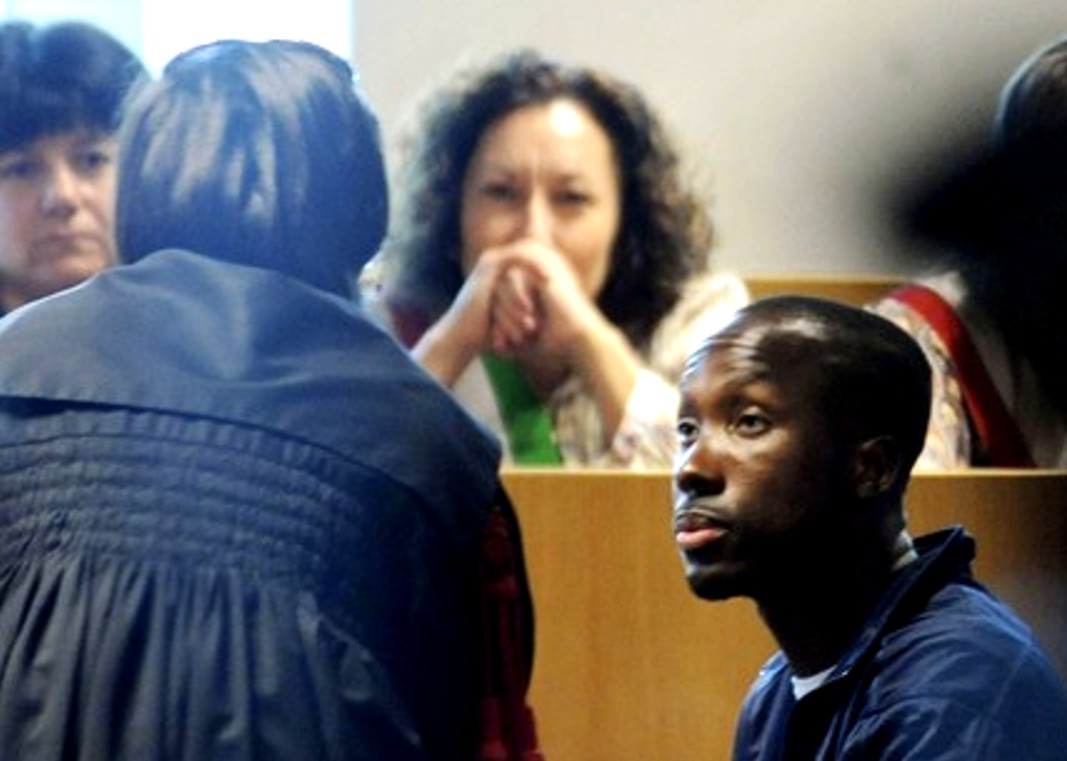
Above, a juror is grinning at Giulia Bongiorno’s frustration while Rudy Guede stonewalls her.
At various points in the trial and appeal she has dropped the ball in spectacularly goofy ways.
Bongiorno disappeared from the trial court late in 2009 for weeks with no explanation. She next appeared with a baby in her arms.
This morning she was sputtering to Judge Hellman that she only found out today about Rudy Guede’s letter - the letter reproduced in full in in this post which we translated into in English a full year ago.
She tried to have it excluded.
Here is another of Bongiorno’s sundry public disasters. She had claimed that an ex-burglar would climb into Filomena’s bedroom - but he never made it above eye-level with the window-sill.
In fact in three and a half years NO climber has ever made it through that window, though one or two did break in the far more logical way - via the hard-to-see and easy-to-climb rear balcony.
We do look forward to Giulia’s suit against the inmates. She has promised such suits often before.
Perhaps they will all arrive in a bunch?
Monday, June 20, 2011
Repeat of March 2010 Post: Guede Denounces Alessi, Blames Knox And Sollecito For Meredith’s Murder DRAFT
Posted by Peter Quennell
Guede will be required to testify on June 27. This is a repeat of Tiziano’s post of 12 March last year. At this point, Mario Alessi had made his claims to Sollecito’s lawyers at Viterbo Prison about Guede telling him he murdered Meredith with two others. And Rudy Guede had issued a heated hand-written rejection, denying this, ridiculing Alessi, and naming Knox and Sollecito as the murderers. Subsequent to this post, Prosecutors Mignini and Comodi travelled to Viterbo and interviewed both Alessi and Guede. This letter was Guede’s last major statement on the subject.
Please click here to read Rudy Guede’s hand-written letter from Viterbo Prison (above) in Italian.
Below is our translation of the letter as posted by TGCom.
Rudy Guede was obviously provoked into putting his version of events out by the claim of Alessi (see video at bottom of this post) that he had a colleague with him on the night, and also by the finding of the judges in the Dispositivo that he was the prime instigator.
The complete text of the letter written by the Ivory Coast man.
Guede’s letter to News Mediaset.
Viterbo 07/03/2010
As usual in this beloved beautiful country of ours, there are many dishonest people given over to lying. And there are likewise those who give these people a voice without the slightest questioning of their consciences, whether it’s worth the trouble of giving space to certain conjectures.
In recent days the only things I have heard have been blasphemous insinuations about me; baseless gossip which has done nothing other than harrying, hither and thither, TV news channels, even though for reasonable people it is the pure invention of a wicked mind.
It must be said that all I have heard in recent days in the media, about what has been falsely stated by this foul being by the name of Mario Alessi, whose conscience is nothing but stinking garbage, are purely and simply the ravings of a sick and twisted mind, his ravings are the dreamed-up, untrue declarations of a monster who sullied himself with a frightful murder in which he took the life of an angelic little human being, as is known throughout Italy. This fellow, now, is telling lies about things that I never said to him and (other things) that I never said, things that don’t exist either in this world or the next.
To his ““ or rather their- rotten declarations, it’s my intention to put in black and white that I never confided in this disgusting creature, since moreover that I’ve got nothing to confess or anything else (to say), and everything that I had to say I have already said to the judges and I will go on shouting and fighting while I am still alive, until the truth itself and justice itself prevail over such lies, and even less did I speak one to one or together with other people or with other inmates about my trial affairs, and if I had ever had something to say, don’t you believe that I would have talked about it with my lawyers? Giving rise to and giving credit to what is a blasphemous statement made by a sick mind, to a monster who had no pity for a child.
With this latest scenario, which my lawyers, my family and I are now used to, from this latest person, the monster Alessi, I hope that Italians and the rest of the world realise that they are dealing with pigs, pigs which stink of the slime of falsehood, but which, not withstanding everything, go around showing their faces and suffocating people with their fetid lying.
Like their umpteenth scenario which does nothing more than give me the strength and the awareness to struggle more than ever, so that the truth that they want to hide is revealed for everyone to see.
As far as I’m concerned, (I have) the serenity and the calm of complete peace of mind, as a person who does not parade this unfair suffering, but who trusts in justice and in the good sense of Italians.
And finally I wish that sooner or later the judges will recognise my complete non-involvement in what was the horrible murder of the splendid, magnificent girl who was Meredith Kercher, by Raffaelle Sollecito and Amanda Knox.
Guede Rudy
Below: Alessi’s statement at Viterbo Prison to Raffaele Sollecito’s defense team. Warning: this very self-serving statement by Alessi is graphic and offensive, as well as, in our view, almost certainly untrue.
Rudy Guede will be interrogated on the claims in this statement today Friday by Mr Mignini and Ms Comodi at Viterbo Prison. There could be news coming out of this interrogation later today.

